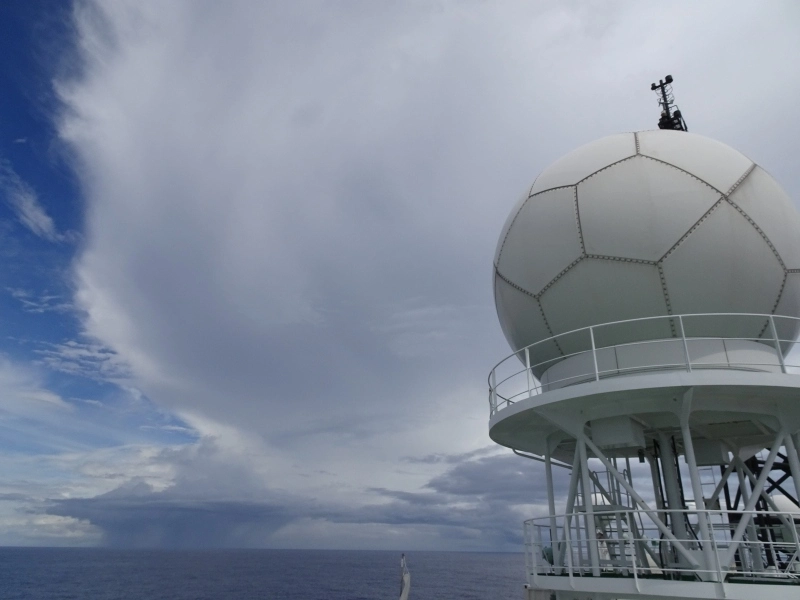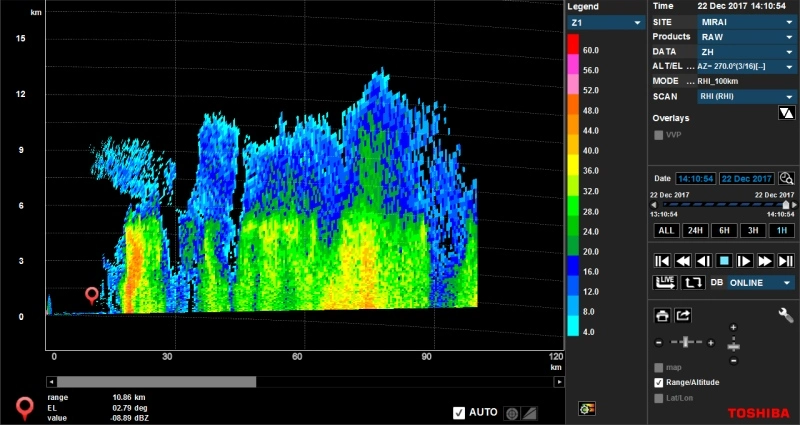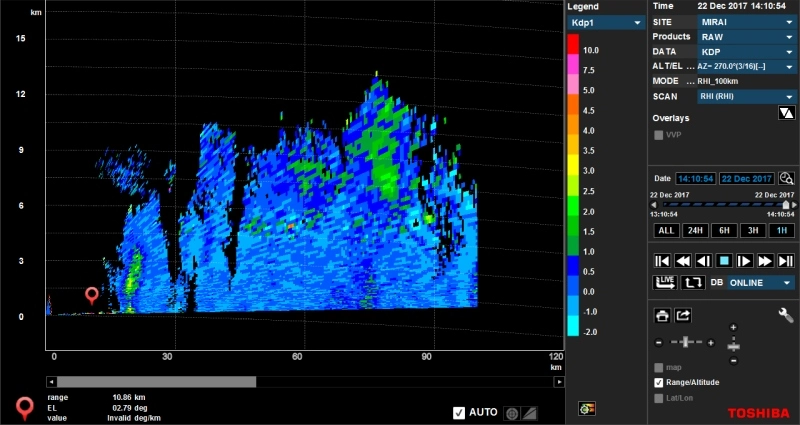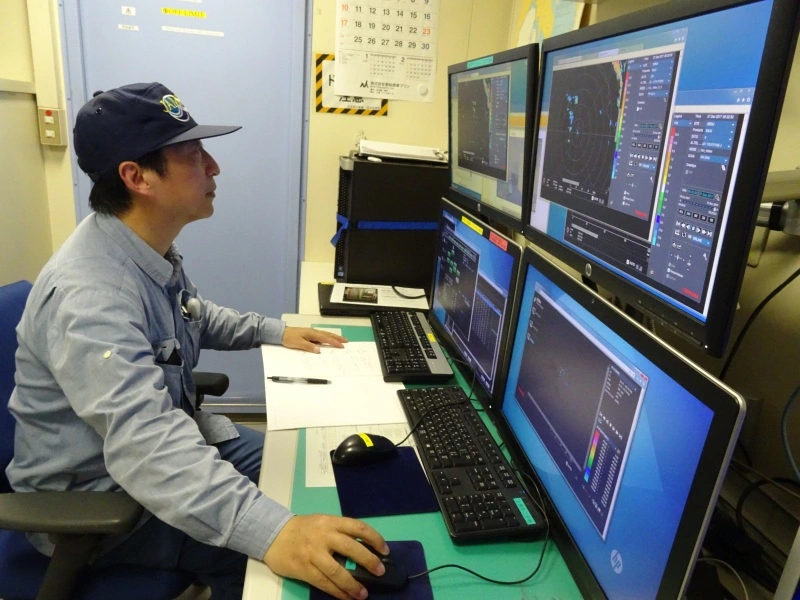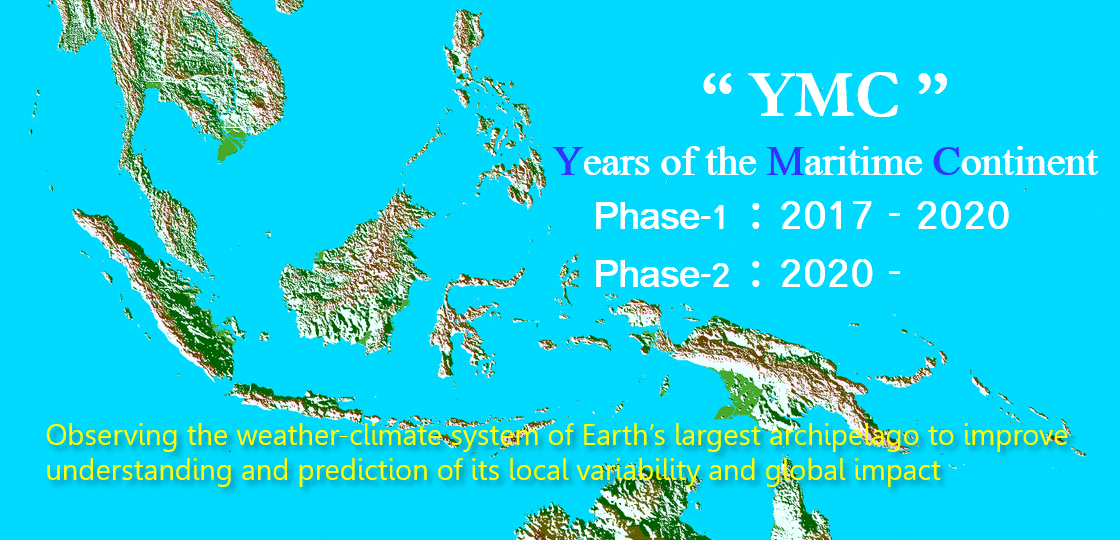"The Mirai Radar"
One of the key instruments on R/V Mirai is THAT: The weather radar.
The first figure is the outlook of the radar antenna. Actually the antenna is inside the ball, called "radome", and rotates to scan three-dimensional structure of the cloud.
You already saw examples in this blog: An highlight in this cruise is yesterday's vortex.
These two parameters, radar reflectivity (alias of rain intensity) and radial velocity (index of wind) has been obtained from the very beginning of the launch of R/V Mirai in 1998.
The radar equipped motion sensors and precise antenna controlling system to cancel the ship motion to stabilize the antenna. The radar never gets sea sick.
The radar was renewed in 2014. Among many upgrades, an epoch is the ability of "polarimetric" measurement.
It provides the information about the "shape" of the precipitating particles, to be utilized to identify the kind of the particles (rain, snow, graupel, ...), and to better estimate the rainfall amount.
The second and third figures are the identical vertical cross section seen by the different parameters.
On the radar reflectivity, a classic parameter, is tend to be high below 5-km height where the particles are liquid (i.e. rain).
On the other hand, a "polarimetric" parameter called "KDP" detects heavy rain part in the left-most part of the cloud (as seen by green/yellow).
In addition, the strong signal is also found in the upper right of the panel, where the height is above 6-km and temperature is subzero.
The data tells that a lot of "horizontally-elongated" ice crystals, such as plane, column, etc. existed.
By combining other "polarimetric" parameters, we will investigate further detail of the internal structure of the cloud.
Actually, the Mirai radar is the world's first shipboard polarimetric radar. We have been trying and trying to make data in better quality.
Our colleague Dr. Biao Geng (see 4th photo, when he is controlling and monitoring the radar) is the key personnel to do the work. His work is in progress even during onboard over rough sea condition. He may have his own powerful stabilizer, like the radar. With his work, we are going to reveal inside of clouds, not only over Maritime Continent but also over the world where Mirai goes.
(reports by M.K.)
